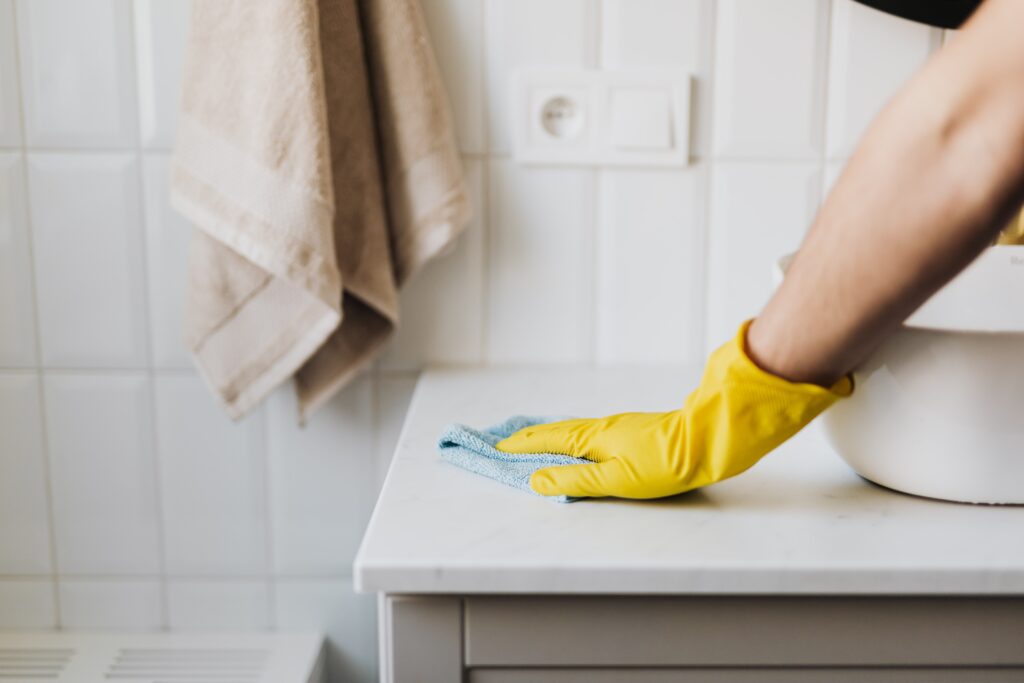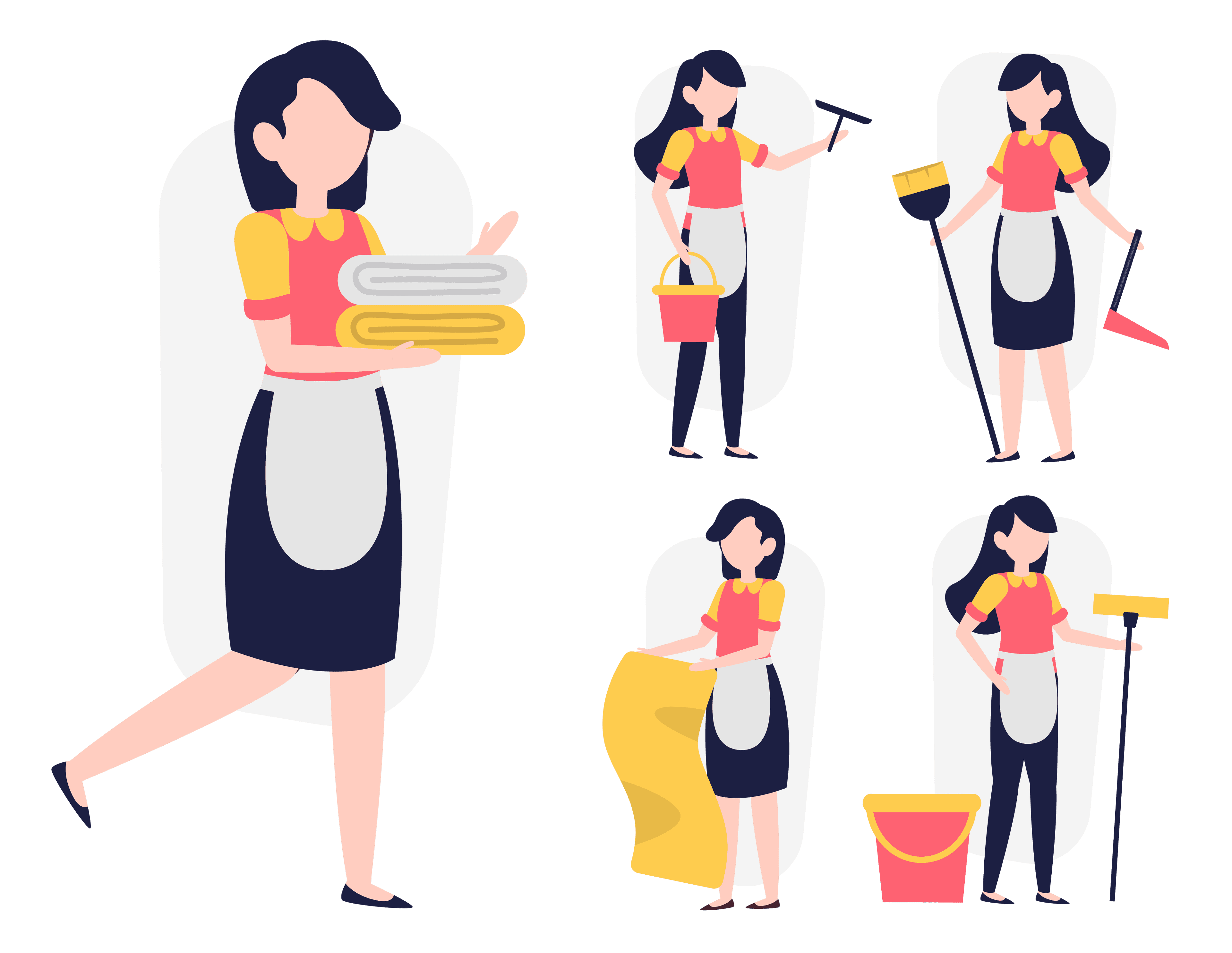In Singapore’s dense urban landscape, where shared spaces and close living quarters are common, especially in HDB flats and condominiums, keeping your home clean isn’t enough. You need to ensure it’s sanitized, especially when it comes to high-touch surfaces.
High-touch areas refer to the parts of your home that people frequently come into contact with — think light switches, door handles, taps, remote controls, and even fridge doors. Germs thrive on these surfaces, and without proper sanitation, they can spread rapidly among household members.
Here’s how you can effectively sanitize high-touch surfaces at home, with simple tools and methods that fit into your daily routine. Additionally, we’ll discuss what to use, how often to clean, and when to consider professional assistance.
- Why Sanitising High-Touch Surfaces Matters
- What Are High-Touch Surfaces?
- Cleaning vs. Sanitizing
- How Often Should You Sanitize?
- What Products Should You Use?
- Step-by-Step: How to Sanitize High-Touch Surfaces
- Tips for Specific Areas
- When to Hire Professional Help
- Eco-Friendly Options
Why Sanitising High-Touch Surfaces Matters
You might clean your home regularly, but that doesn’t always mean it’s germ-free. Germs, bacteria, and viruses, including the flu and stomach bugs, can linger on surfaces for hours, even days.
In Singapore’s tropical climate, humidity can also encourage the growth of mould, mildew, and bacteria. If you live with children, elderly parents, or immunocompromised individuals, it becomes even more critical to maintain a hygienic environment.
Here’s what can happen if you skip sanitizing:
- Higher chances of cold and flu transmission
- Increased risk of foodborne illnesses
- Spread of germs from communal areas to personal spaces
- Trapped bacteria in enclosed aircon environments
- Accumulation of grime and allergens over time
What Are High-Touch Surfaces?
You might be surprised at how many spots you and your family touch throughout the day. Here’s a non-exhaustive list of surfaces that should be sanitized regularly:
Around the house:
- Door handles (main doors, bedrooms, bathrooms)
- Light switches
- Remote controls
- Stair railings (if you live in a maisonette)
- Table surfaces and countertops
- Cabinet and drawer handles
- Keys and keypads (mainly digital locks)
Kitchen:
- Fridge handles
- Microwave buttons
- Stove knobs
- Sink taps
- Dining table and chairs
Bathroom:
- Tap handles
- Toilet flush buttons
- Showerheads and handles
- Soap dispensers
Electronics:
- Mobile phones
- Tablets and laptops
- Game controllers
- TV remotes
- Aircon remotes
Cleaning vs. Sanitizing
Many people think wiping a surface makes it clean enough. But there’s a difference between cleaning and sanitizing:
- Cleaning removes dirt, dust, and debris.
- Sanitizing reduces the number of germs to a safe level.
- Disinfecting kills most germs and viruses on a surface.
For high-touch surfaces, aim to sanitize and disinfect after cleaning.

How Often Should You Sanitize?
It depends on usage, but here’s a basic guide:
| Surface | Suggested Frequency |
| Door handles | Daily |
| Light switches | Daily |
| Mobile devices | 1–2 times per day |
| Kitchen surfaces | After each use |
| Bathroom taps | Daily |
| Remote controls | Every 2–3 days |
| Work desk | Daily |
What Products Should You Use?
In Singapore, you can find a variety of household-safe sanitizers and disinfectants. Look for products with an alcohol content of at least 60–70%, or active ingredients such as quaternary ammonium compounds (quats).
Here are some suitable options:
- Isopropyl alcohol (70% for electronics and remotes)
- Diluted bleach solutions (1:49 ratio, approved by NEA)
- Antibacterial sprays or wipes (Dettol, Clorox, or local brands)
- DIY solution: Mix 1 cup water, 1 cup white vinegar, and a few drops of tea tree oil or lemon essential oil (Note: Avoid vinegar on stone surfaces)
Always test a new product on a small surface area before using it extensively.
Step-by-Step: How to Sanitize High-Touch Surfaces
Step 1: Wear Gloves
This protects your skin from harsh chemicals and prevents the transfer of bacteria back onto surfaces.
Step 2: Clean First
Use a damp cloth or gentle detergent to wipe off visible dirt and grime. Sanitizing a dirty surface won’t be effective.
Step 3: Apply Disinfectant
Spray or wipe your disinfectant directly onto the surface. Let it sit for the required contact time—usually about 3 to 5 minutes—to effectively kill germs.
Do not wipe it off immediately. Give it time to work.
Step 4: Air Dry or Wipe
Let the surface air dry if possible. If you need to wipe it down (e.g., electronics), use a clean, dry microfiber cloth.
Tips for Specific Areas
For Electronics:
Use alcohol wipes or a cloth dampened with 70% isopropyl alcohol. Don’t oversaturate, and avoid getting liquid into ports or openings.
For Kitchen Counters:
Avoid harsh chemicals in food-prep areas. Use food-safe sanitizers or natural options like vinegar-based solutions.
For Bathrooms:
Use bleach-based cleaners or mould-removing sprays. Singapore’s humidity makes bathrooms a hotspot for bacteria and mildew.
When to Hire Professional Help
If you’ve had a COVID-19 case at home, are caring for someone unwell, or simply don’t have the time, hiring a part-time cleaner trained in disinfection protocols can be a smart move.
Many local services offer add-ons, such as steam cleaning or UV disinfection. Just ensure the company follows NEA-recommended disinfection guidelines.
Eco-Friendly Options
Prefer green cleaning? Try these alternatives:
- White vinegar + water: Cuts through grease and bacteria
- Hydrogen peroxide: Safe and effective for most surfaces
- Essential oils (tea tree, eucalyptus, lemon): Antimicrobial and fragrant
These are safe for homes with kids or pets and reduce exposure to harsh chemicals.
Final Thoughts
High-touch surfaces are often overlooked, but they play a critical role in maintaining your home’s health. In a high-density city like Singapore, where external exposure is high—from lifts and public transport to hawker centres—it’s essential to minimize the germs you bring home.
With simple routines, safe products, and a little consistency, you can effectively maintain a sanitised, safe, and stress-free home.







